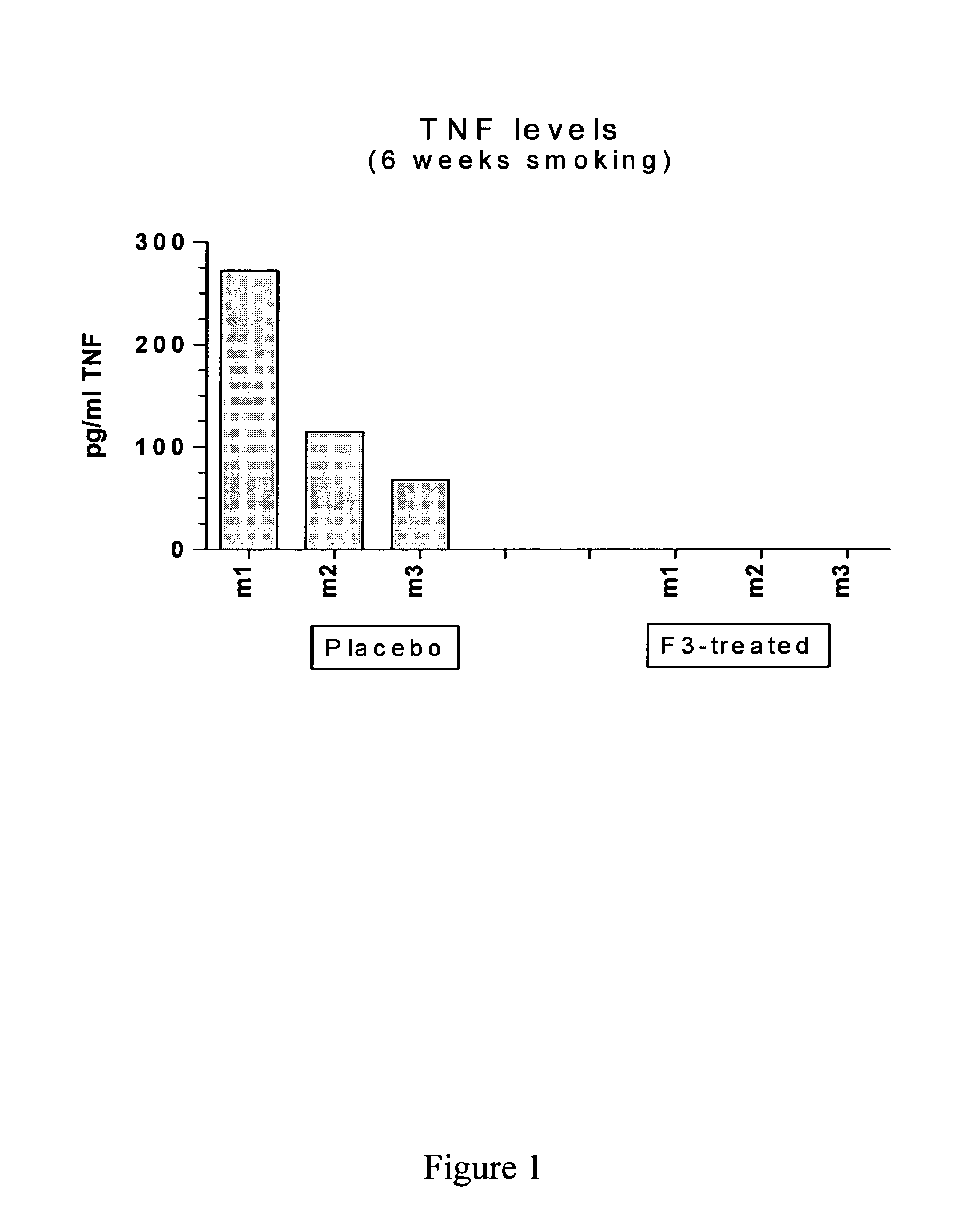Treatment of type 1 immune response-mediated inflammatory lung disease by modulation of ifn-gamma activity
a technology of immune response and inflammatory lung disease, applied in immunological disorders, antibody medical ingredients, peptide/protein ingredients, etc., can solve the problems of life-threatening respiratory failure, lung hyperventilation, ventilatory muscle fatigue, etc., and achieve enhanced tnf production and neutrophil elastase activity.
- Summary
- Abstract
- Description
- Claims
- Application Information
AI Technical Summary
Benefits of technology
Problems solved by technology
Method used
Image
Examples
example 1
Measurement of IFNγ in Lungs of Patients With T1 Inflammation
[0100] Immunological inflammation may be of a Type 1 with predominance of interleukin 2 (IL2) and interferon gamma (IFNγ) production or a Type 2 characterized by predominant IL-4 and IL-5 production. Presence of IFNγ in the lungs of patients with T1 inflammatory lung diseases can be measured in different ways as outlined hereunder.
[0101] One method is the measurement of cytokine levels in spontaneously produced and / or induced sputum. Sputum is defined as expectorations of fluid, cells and solutes that are present in the lining fluid of the upper bronchial tree. Spontaneous sputum can be obtained in a simple and non-invasive way whilst induced sputum is induced by exposure of individuals to a nebulised saline solution (Out et al. 2001). Protease inhibitors can be added shortly after isolation.
[0102] The gel and sol phase in sputum can be separated from each other by means of ultacentrifugation (50.000 g; 4° C.). Otherwi...
example 2
Effect of Blocking Ifn-gamma, by Anti-mouse Ifn-gamma Mab, on Cigarette Smoke Induced Emphysema in Mice
Introduction
[0109] Chronic Obstructive Pulmonary Disease (COPD) is characterized by the progressive development of a not fully reversible airflow limitation (Pauwels et al., 2001). The airflow limitation is due to a variable mixture of respiratory bronchiolitis and emphysema. A major risk factor for COPD is cigarette smoking. Inflammation of the airways and the lungs is thought to play a major role in the pathogenesis of COPD. Human studies clearly illustrate a smoking-induced inflammatory response, comprised of neutrophils, macrophages, dendritic cells, eosinophils, CD4+ and CD8+ T-lymphocytes in smokers' airways and lung parenchyma (Retamales et al., 2001; Casolaro et al., 1988). The exact role of individual inflammatory cells and mediators is unknown at the moment.
[0110] Wang et al. (2000) demonstrated that interferon gamma (IFN-gamma) causes emphysema with alveolar enlarge...
PUM
| Property | Measurement | Unit |
|---|---|---|
| volume | aaaaa | aaaaa |
| flow rate | aaaaa | aaaaa |
| flow rate | aaaaa | aaaaa |
Abstract
Description
Claims
Application Information
 Login to View More
Login to View More - R&D
- Intellectual Property
- Life Sciences
- Materials
- Tech Scout
- Unparalleled Data Quality
- Higher Quality Content
- 60% Fewer Hallucinations
Browse by: Latest US Patents, China's latest patents, Technical Efficacy Thesaurus, Application Domain, Technology Topic, Popular Technical Reports.
© 2025 PatSnap. All rights reserved.Legal|Privacy policy|Modern Slavery Act Transparency Statement|Sitemap|About US| Contact US: help@patsnap.com

